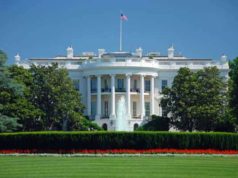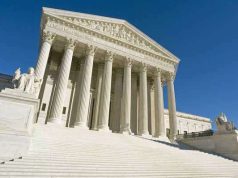Table of Contents

Article 1 of the US Constitution: The Legislative Branch
The United States Constitution is a revered document that lays out the fundamental principles of the American government. The Constitution’s Article I enshrines the authority and powers of Congress, thereby establishing the legislative branch of the federal government. The US Congress is characterized by bicameralism, meaning that the legislative branch is made up of two separate chambers: the Senate and the House of Representatives. Article I was crafted in a way that outlines the mechanics of the legislature, establishing its duties, powers, limitations, and responsibilities. Here’s a breakdown of Article 1 of the US Constitution.
The Structure of the US Congress
Article 1, Section 1 clarifies that all legislative powers shall be vested in a Congress consisting of a Senate and House of Representatives. The House of Representatives is structured in such a way that its members serve two-year terms and are proportionally represented based on the population of their respective state. In contrast, Senators serve six-year terms. Each state has two Senators, regardless of their population size. Hence, there is a balance between the upper and lower chambers of Congress to ensure the interests of all states and their citizens are represented.
Powers and Responsibilities of the US Congress
Checks and Balances on the US Congress
Article 1 sets forth several checks on the power of Congress that ensure no branch of government becomes too powerful. Firstly, the President holds the power of veto, meaning that they can veto bills approved by Congress. However, Congress can override this veto by a two-thirds vote in both the House and Senate. Secondly, the judicial system provides the Congress with a check on their powers. The judiciary can declare legislation unconstitutional, which results in it being struck down. Thirdly, the Senate holds the authority to impeach and remove officials of the executive branch and the judiciary. The House of Representatives, conversely, has the power to impeach an official, while the Senate acts as the jury during the impeachment trial.
Conclusion
The legislative branch is one of the three distinct branches of the American government, and its role is determined by Article 1 of the United States Constitution. Through a system of checks and balances, the Constitution ensures that power is not concentrated within a single branch, preventing tyranny, and guaranteeing the functioning of democracy. Article 1 also grants Congress the broad powers it needs to regulate commerce, deal with national security issues, and provide for the welfare of the country’s citizens. As a result, the legislative branch of the US government plays a crucial role in maintaining the nation’s democracy and safeguarding the freedoms of its citizens.
Background
A bicameral legislature simply refers to a particular body of government that consists of two legislative houses or chambers. In certain variations, a bicameral system may include two parliamentary chambers.
The overall purpose behind the bicameral legislature is to provide for representation for both the citizens of a country, as well as the state legislatures on the federal level or in the central government of a country or nation.
Most federal systems of government will likely employ a bicameral system for their legislature. There are two inherent arguments over the function and purpose of a bicameral legislature. Experts will often cite the occurrence of deadlocks or stalemates in this particular system as a deterrent to passing important political reforms, making them more difficult to achieve. Others will argue that the bicameral legislature is necessary to maintain an effective system of checks and balances which will prevent legislation from being enacted into law that would unfavorably affect a certain faction or government or its people.
American Bicameral Legislature
The United States Congress proves to be quite an exceptional example of the bicameral legislature system. It was enacted as a result of the drafting of the United States Constitution, which arose from the Philadelphia Convention in 1787. It replaced the previous Congress, which was a unicameral system. Furthermore, its genesis is a result of a compromise between opposing views of the Framers of the Constitution.
James Madison and his Virginia Plan called for a bicameral system in which the lower house would be elected by the people, while the upper House would be appointed by the lower House. William Paterson and his New Jersey Plan proposed that the unicameral Congress be maintained and new powers are granted in order to provide for a more effective government. The general argument rendered by Paterson and those supporting his plan was that creating a bicameral system would undermine the power of the states. Eventually, a compromise was reached and Article I of the Constitution is the outcome. Article I provides for the current form and structure of Congress today. Theories and Purpose
The creation and implementation of a bicameral legislature by the United States Constitution had the purpose of melding the concepts of democratic values and the principles of federalism. Congress itself embodies both concepts in both the House of Representatives and the Senate. The House is provided the responsibility of representing the citizens of the United States, while the Senate is to maintain a semblance of authority over the States. This is reflected in the explicit responsibilities and powers delegated specifically to each House, as well as in the term length and qualifications for membership.
The House is to deal with aspects of the people and their direct election by citizens. A short two-year term is implemented to ensure that the people are the main agenda of the Representatives. The Senate has more strict qualifications and a six-year term, which allows them to focus on issues that are more extensive that affect the nation as a whole.























